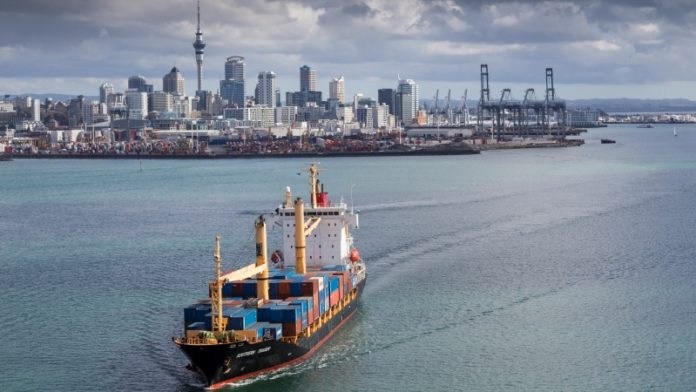The Ports of Auckland (POAL) is in the midst of delivering 30-year master plan, a major investment programme which will increase capacity, efficiency and returns, as well as lay the foundation for the company to meet its 2040 zero emission goal.
POAL says that in the last six months it has seen significant progress and the next six months will see the completion of two major master plan elements:
- the container terminal automation
- and new car handling building.
There is also progress on channel deepening, according to the announcement.
Once automation is fully live around the middle of the year, POAL will gain a significant amount of terminal capacity, from around 900,000TEU a year to around 1.7 million TEU.
“We largely completed infrastructure work for terminal automation this period, enabling some capacity to be returned to terminal operations,” POAL chief executive, Tony Gibson, said.
“We have felt the effect of the automation work this period, as container volumes were down 2% on the year prior as a result of the loss of two service calls, a service change and a high number of vessels arriving out of schedule,” he added.
Once automation is fully delivered, POAL expects to be in a position to handle as many containers as customers want.
Automation will go live in two phases: first the northern part of the terminal in late March followed two-three months later in the southern area. In early January POAL decided to put the go-live date for Phase 1 back a month to the end of March 2020 so that it could handle unexpectedly high January volumes.
POAL is now testing the new terminal operating software using live terminal data. Staff training is ongoing and truck drivers are also being trained in the new processes.
“Work on our new car handling building has progressed very well and the building is expected to be finished on time and on budget around the middle of 2020,” Gibson says.
Revenue was flat while costs for the last six months were up, due to the investment programme, there were also higher interest costs, and higher labour costs, according to POAL. As a result, net profit after tax was US$17.2 million.
The company expects a temporary coronavirus impact, but it cannot estimate the quantity of lost cargo.
The completion of the automation project makes POAL optimistic about the 2020/21 financial year, despite of the continuing uncertainty in the global trade environment.
POAL has created a carbon calculator so that cargo owners can see the difference using a local port makes. POAL intends to be a zero-emission port by 2040.







